Edible sweet variety of honeysuckle "Strawberry" with amazing taste and aroma
Strawberry Honeysuckle occupies a special place among edible varieties. With virtually no flaws, it enjoys well-deserved popularity among gardeners, since it needs minimal care, is frost-resistant and gives a stable harvest of large, tasty and useful berries. We will describe in detail what conditions are necessary for growing Strawberry in this article.
The content of the article
What is this variety of honeysuckle
Strawberry - edible variety honeysuckle early ripening. Harvested from late June to late July.
Average yield - 2-4 kg per bush. Due to the delicate skin, the fruits do not tolerate transportation well and are stored in the refrigerator for no more than 4-5 days.
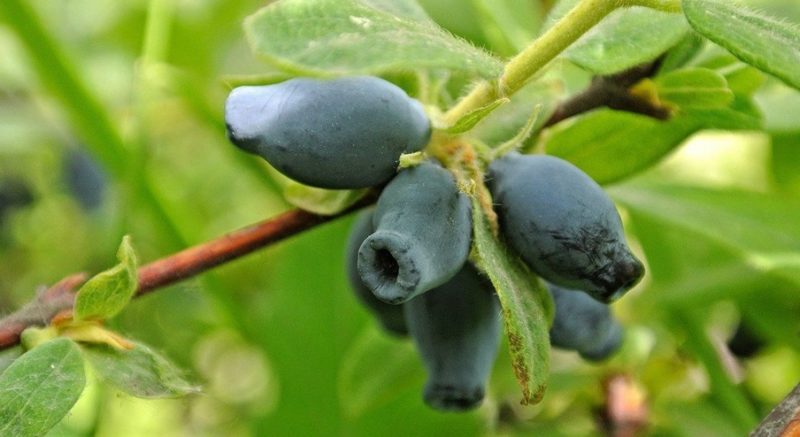
Brief history of origin and distribution
This hybrid was bred by breeders of the South Ural Research Institute of Fruit and Potato Growing on the basis of seedlings of the Altai group of honeysuckles.
Work on the creation of Strawberry began in the 90s. XX century, and ended at the beginning of the XXI century.
Reference. The variety is not included in the State Register of Russia.
Characteristics and description of the bushes
The plant is a vigorous 2-meter shrub with an oval, slightly elongated crown and strong, strong and leafy shoots.
The size and shape of the leaves vary. They can be small or medium in size, oval, elongated elliptical or very oblong. The leaf plates are painted in dark or bright green.
During flowering, small yellow bisexual flowers appear on the bushes in the leaf ovaries, collected in small racemose inflorescences.
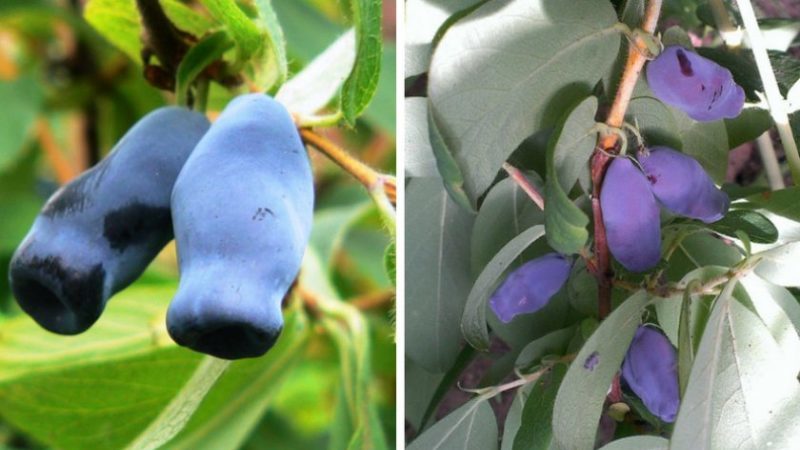
Resistant to temperatures
Strawberry is a frost-resistant honeysuckle variety. The bushes tolerate a drop in air temperature to -50 ° C, during the flowering period - to -10 ° C.
Moisture and drought resistance
The culture does not tolerate a lack of moisture. Because of this, bitterness appears in the taste of the berries. If the bushes are under the scorching sun and don't get enough moisture, the leaves begin to dry out.
Dangerous for honeysuckle and excessive watering or stagnant moisture due to the proximity of groundwater. In this case, there is a risk of decay of the root system.
Disease and pest resistance
The variety is characterized by medium resistance to diseases. Most often, the bushes are affected by powdery mildew, ramulariasis and cercospora.
Among pests, leaf beetle caterpillars, honeysuckle aphids, false shield insects and honeysuckle mites are dangerous.
Characteristics and description of fruits
The berries are large, weigh an average of 1.5-2 g, oblong-oval or pitcher-shaped. Covered with a thin blue-violet skin.
The taste is dessert, sweet, with a slight sourness, smack and aroma of strawberries.
The fruits contain amino acids, sucrose, fructose, vitamin C, A, B, calcium, phosphorus, copper, potassium, iodine and magnesium, pectin and tannins.
Areas of their application
Berries are most often consumed fresh, and to increase the shelf life they are dried, dried or freeze. Fruits are also suitable for various types of preservation and preparation of compotes, juices, jams, preserves.
The leaves and branches of this plant are also used in folk medicine: they are used to prepare medicinal decoctions and infusions.
Due to their decorative appearance, the bushes are actively used to decorate garden plots and create hedges.
Advantages and disadvantages of the variety
Pros of Strawberry Honeysuckle: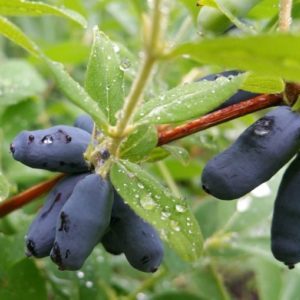
- good productivity;
- excellent taste and rich chemical composition of the fruit;
- early maturation;
- unpretentiousness;
- frost resistance;
- lack of tendency to shedding.
This variety has practically no disadvantages. Small disadvantages include only average resistance to fungal diseases and exactingness to watering.
Growing technology
Honeysuckle Strawberry does not have any special agrotechnical requirements. She is unpretentious in leaving and tolerates the mistakes made by the gardener when growing.
Optimal conditions
This variety is planted in a place protected from gusty winds and drafts. It is desirable that it be slightly shaded - this will protect the bushes from the scorching sun.
Strawberry prefers moderate humidity, therefore, for planting seedlings on the site, a low-lying place is chosen, but make sure that the groundwater level is at least 1 m from the soil surface.
Plants are unpretentious to the soil composition, but they grow better, develop and bear fruit on air and moisture-permeable sandstones and loams with a neutral or low acidity level.
Reference. If there is heavy clay soil on the site, it is structured, which improves aeration and water permeability.
Terms and rules of landing
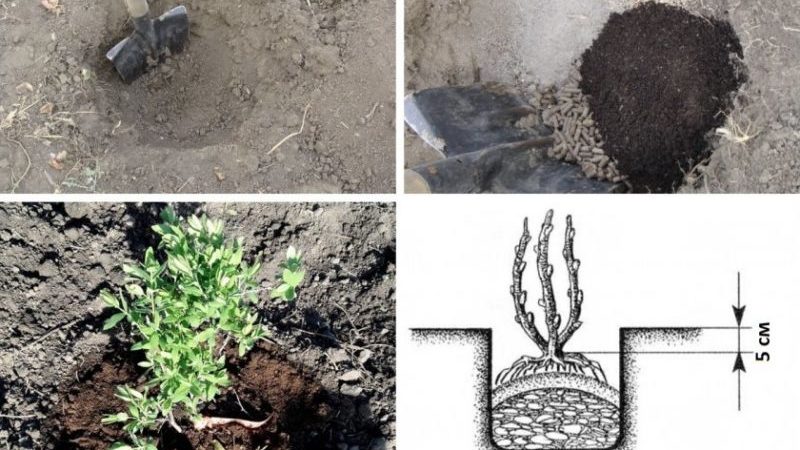
The optimal time for planting seedlings is the last decade of September. Spring planting is permissible only before the buds open. In autumn, plants take root better, in spring they often die from lack of moisture in the soil.
Before planting, the roots of the seedlings are kept in a solution of growth stimulants (Epin, Heteroauxin) for 2-3 hours - this helps to avoid drying out of the root system and improves plant survival.
Landing rules:
- Dig out 50 × 40 cm planting recesses on the site.
- Pour a nutrient mixture into them - half of the dug earth, 350 g of wood ash, 80 g of double superphosphate, 40-50 g of potassium sulfate, 10 kg of rotted manure or compost.
- Form a hill from the soil, put a seedling on it, spread its roots and cover it with a fertile mixture so that the root collar is 5-6 cm deep.
- Water the plants abundantly in several stages. The total water consumption is 10-20 liters per bush.
- Mulch the near-trunk circle with a diameter of 75-90 cm with peat, humus or straw.
The distance between the bushes should be 1.5-2 m.
Further care
It is a moisture-loving variety. Young plants are watered abundantly 1-2 times a week, adults - 4-6 times during the growing season. Water consumption - 1-2 buckets for each bush.
In hot weather, finely dispersed sprinkling of the crown is additionally carried out for 6-7 minutes daily. The foliage is sprayed in the morning or evening so that it does not burn out under the sun.
During the first 2-3 years of life, Strawberry is fed with a solution of mullein (1 liter per bucket of water) or bird droppings (1:20) twice a year: before flowering (at the end of April) and before fruiting (in May - early June).
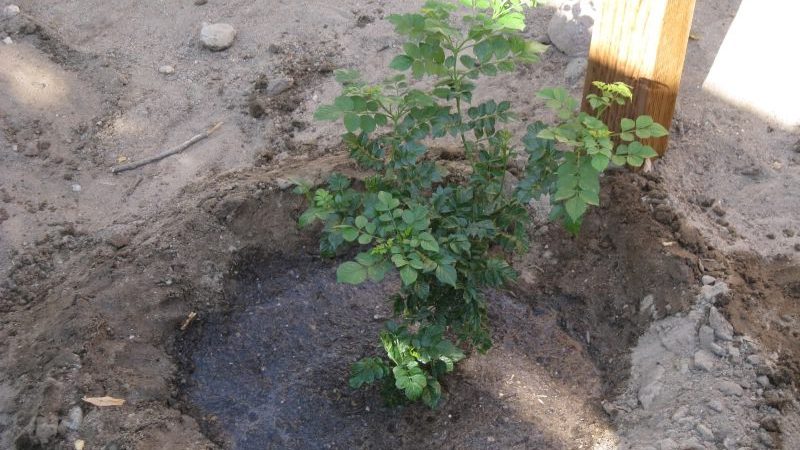
Starting from 3 years old, the plants are fed according to the scheme:
- April - nitrogen fertilizers to stimulate the formation of vegetative shoots;
- after harvesting - a solution of nitrophoska (1.5 tablespoons per bucket of water) or manure diluted in water;
- late autumn - potassium-phosphorus fertilizers (100-120 g of superphosphate or 50-60 g of potassium sulfate for each bush).
4-5 years after planting the bushes, they begin to carry out pruning... In April, all old, diseased, deformed and damaged branches are cut out, zero shoots are removed. For plants over 15 years old, rejuvenating pruning is also carried out every 3-4 years, cutting off all shoots and leaving only hemp no more than 40 cm long.
Reference. The pruning procedure is combined with fertilization.
Possible problems, diseases, pests
Diseases that can affect Strawberry are presented in the table.
| Disease | Signs | Treatment |
|---|---|---|
| Powdery mildew | A white powdery bloom appears on the leaf plates. | Treatment of plants during vegetation with colloidal sulfur, Bordeaux liquid or preparations "Skor" or "Vector". |
| Ramulariasis | On the leaves, spots of gray-white color are formed, which gradually darken and become larger. | Spraying the bushes with a solution of "Fundazole" or copper sulfate. |
| Cercosporosis | White spots with a brown edging are formed on the leaves. |
The bushes of this variety of honeysuckle are attacked by honeysuckle aphids, leaf beetle caterpillars, pseudo-scale insects and honeysuckle mites. To combat insects, insecticidal or insectoacaricidal preparations are used, for example, "Actellik", "Confidor", "Rogor".
Wintering
Due to its high frost resistance, Strawberry tolerates winter well and does not need insulation and shelter.
In winter, there is a risk of damage to plants by rodents or birds. To avoid this, the bushes are covered with special nets or synthetic bags.
Reproduction
The easiest and most effective way to reproduce honeysuckle is by layering. To do this, at the beginning of spring, several shoots are selected on the lower tier of the bush, bend them to the ground and secured with wooden hooks.
In the place where the branch comes into contact with the soil, the skin is slightly cut to stimulate the formation of adventitious roots. The next spring, young plants are separated from the mother bush and transplanted to a permanent place.
Reference. The survival rate of plants obtained from cuttings is 100%.
The method of dividing the bush is also often used, in which the root system of an adult plant is divided into several parts, and the cuttings are seated separately.
Features of growing this variety, depending on the region
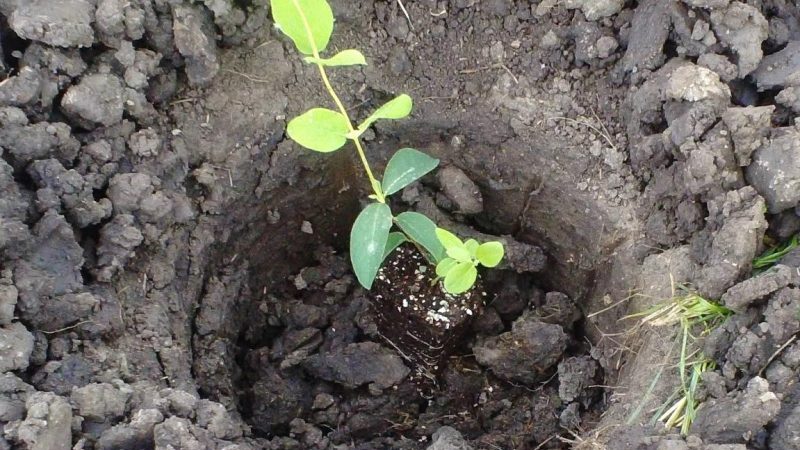
The requirements for growing Strawberry Honeysuckle do not change depending on the region and its climatic conditions. Due to their excellent frost resistance, the bushes do not need winter shelter, even if they are cultivated in the northern regions.
The only thing that should be taken into account is the possibility of more frequent and abundant watering, provided that this variety is grown in the southern regions characterized by hot and dry summers.
Pollinating varieties
Due to the presence of flowers of both male and female sex, Strawberry Honeysuckle belongs to the partially self-pollinated varieties. However, the yield is average.
So that the bushes bear fruit regularly, and the yield is plentiful, 2-3 other varieties of honeysuckle are planted next to the strawberry bushes. This promotes cross-pollination, increases crop yields and improves berry quality.
The best pollinating varieties of Strawberry - Delight, Success, Bazhovskaya, Sineglazka.
Reviews of summer residents
On specialized forums, gardeners speak positively about this variety of honeysuckle.
Alla, Ufa: “I have 6 bushes of edible honeysuckle growing on my site, 2 of which are Strawberry. Berries of this variety with a strawberry flavor. I like its unpretentiousness - the care is minimal. At the same time, it bears fruit perfectly - this year I have harvested almost 7 liters of berries, for me this is a record amount ”.
Evgeniy, Kostroma: “I love strawberry a lot for that: the berries are very tasty, healthy, ripen early and do not crumble, you hardly need to look after the bushes. The crop is stored a little, but this is not a drawback of the variety, all honeysuckle does not lie for a long time. You can freeze berries or cook jam, but we don't. These are the first fresh berries, so we are happy to eat them right away, we have a big family. "
Pavel, Voronezh: “Initially, I bought Strawberry to make a hedge and separate my site from my neighbor. The idea was a success, and now the fence is not needed. The bushes grew tall, powerful, and even very beautiful.There was no fruiting for 3-4 years, then they told me that I needed to plant several other varieties nearby, which I did. Now every year we enjoy delicious berries. "
Conclusion
Despite the fact that the Strawberry variety is not included in the State Register of Russia, many gardeners, especially beginners, choose it. This is due to the almost complete absence of shortcomings and a mass of positive characteristics of this honeysuckle, among which are unpretentious care, winter hardiness, large-fruited, pleasant taste and benefits of berries.